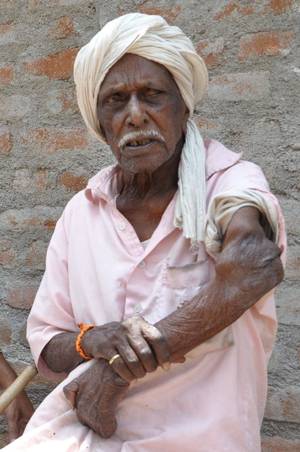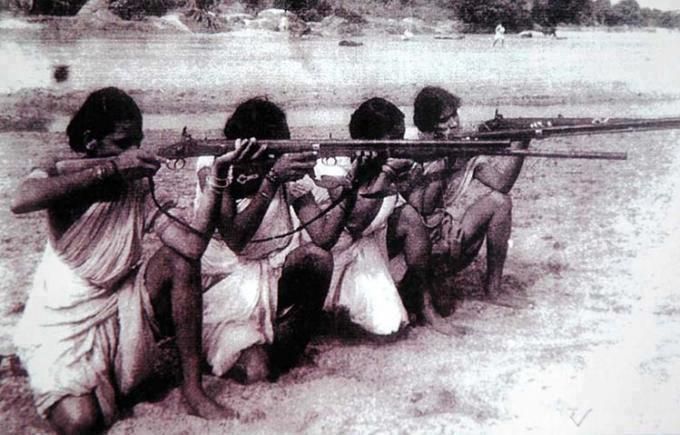By A. Suneetha
In the aftermath of Babri Masjid demolition and the rise of the majoritarian Hinduism, the framework of “competitive communalization” has become restrictive in thinking about the situation of Muslims in the country, especially the question of why the burden of “communalism” has been borne disproportionately by Muslims (Tejani, 2008). It has reached a level where even the articulation of dissent by Muslims and expression of disaffection being called communal. More importantly, it also does not explain the exclusion of Muslims, their concerns, interests from the domain of secular-nationalism. This has become increasingly so after the Sachar Committee report which has made us understand this exclusion as systemic to our secular public domain.

In the recently divided state of Andhra Pradesh the process of secularization betrays both these tendencies: One, despite a very strong left lineage, specifically Muslim concerns, history, interests and mobilization have largely remained outside the pale of putative Telugu identity, culture, history and literature. Two, specific articulation of Muslim interest, identity, culture and history, runs the risk of being labeled communal. At certain junctures, it appears as if, unless specifically Muslim articulations are excluded, an issue/concern/ interest/movement cannot become secular. At several moments during the progress of the recent movement for a separate state of Telangana, which opened up questions of Telugu identity, language, culture, apart from resource-distribution through a secular articulation of disaffection about regional backwardness, this character of the secular identity of the Telugus in the state came to the forefront. Even as the promises of the unitary linguistic identity and its historical claims are getting questioned and the need for re-writing of history is getting recognized, issues raised by the local Muslims continue to get tagged onto the same history, memory and identity thereby configuring them as “divisive” and “communal.”
The Nizam controversy (2010)
The agitation of 2009 for a separate Telangana state began with the protests by students of Osmania University against the Government Order that permitted students from every part of Andhra Pradesh to apply for government posts in Hyderabad district. Support from the nine Telangana districts poured in. Kalvakurti Chandrasekhar Rao went on fast and soon, every influential leader and political party joined the protests, demanding a separate state, except CPI (M) and All India Majlis Ittehad-ul-Muslimeen (AIMIM). The Marxist Leninist Party (New Democracy) also joined the protests. This movement saw huge burst of cultural creativity, popularized through a module-event called Telangana Dhoom Dhaam. A popular song at these events was “Nizamu sarkaroda”– a song composed by the (united) Communist Party against big landlords during the Telangana Armed Struggle between 1944-1950 (Sundariah, 1972). References to the “Nizam” and “Razakars’ revived at this moment making the Muslim intelligentsia and activists, who were active participants in the Telangana struggle, extremely uncomfortable. For the Telangana activists, the song symbolized their fighting spirit against the “autocratic” state and useful in challenging their image of a slavish culture of “dora, nee banchen” (I am your slave, my lord) propagated by the coastal Andhra culture industry and politicians. However, for the Muslims, the connotations (Srivatsan, 2010) were entirely different – of the forceful identification with the Nizam, who has been canonized as the most feudal aristocrat in the popular culture and the left historiography and as anti-national due to his refusal to integrate Hyderabad state with the Indian Union. Some Muslim formations (such as Muslim Forum for Telangana and Civil Liberties Monitoring Committee) also pointed out that the popular songs of that era, when sung in the current Telangana struggle, not only are a-historical but also feed into the current anti-Muslim tendencies where all the historical referents and contexts have got reduced to a “singular Muslimness” in the contemporary Telugu discourse on secularism and Muslims. Even as the Telangana intelligentsia responded with more careful re-consideration of the legacy of the Nizam (Jadhav KR, 2011) references to the anti-Razakar legacy of the Telangana people continued, prompting questions about the politics of this popular memory.
As is well known, the communist party led movement was suppressed with much more brutality by the Indian army after 1948 integration. However, such suppression has not been memorialized as much as the attacks by the “Razakars” (Srinivas J, 2010). Secondly, it also begged the question of what is it at the current juncture that has led to the revival of the memory. Has the 2009 Telangana movement for a separate state enabled a re-alignment of the caste-class formation in such a way as to articulate an anti-Muslim sentiment in the form of “anti-Razakar” memory?
Debate in legislative assembly in December 2010
In the winter session of 2010 legislative assembly, the tension between secular Telangana-ism and Muslim “communalism” came to the fore. By this time, the government had charged hundreds of false cases of rioting, arson, attempt to murder, sometimes even SC/ST Atrocities Act on the Telangana activists, especially students. Most of the opposition parties protested against this unjust use of law and stalled the proceedings till the government agreed to make an announcement regarding the withdrawal of these cases.
Towards the end of the debate on this issue, Akbaruddin Owaisi, the floor leader of the AIMIM party, supporting the opposition, also sought their initiative in withdrawing cases against Muslim youth and students in the old city, that have been pending since 2007 Mecca Masjid blast, despite their acquittal by the lower court.
He argued that such a move would assure the Muslims that they were also part of the Telangana. “But, after the blasts in Mecca Masjid, the government started arresting Muslims. Then the police fired upon Muslims, coming out of a mosque.” There was the Bhaskar Rao commission which didn’t come out with anything….It didn’t stop there. It continued with the arrest of innocent youth. 100 young men, students among them, were detained, tortured and booked under different sections. The court has acquitted them now. Even after their acquittal, they continue to be harassed, their families continue to face difficulties and they are not given jobs…I demand that the government apologize for making so many Muslims suffer like this…Not a single political party in the state has raised this issue in the Assembly. Are they not part of Telangana?”
Even as the government responded positively, his well-reasoned demand was uniformly condemned by all the parties across the spectrum as a ploy to divide the Telangana issue on a communally divisive line. While it is well-known that Majlis-e-Ittehadul Muslimeen (MIM) did not support a separate Telangana state, despite acknowledging the grievances of Telangana (evident in its submissions to the Girglani Commission), it was difficult to understand how the inclusion of Muslim detentions would “communalize” the problem of state-sponsored illegal detentions.
Communal tensions in 2011 in Telangana
The Muslim protestations were not borne out of false alarm. After the Telangana movement picked up momentum, several small towns with small or significant Muslim population, including Hyderabad– Hyderabad (March 2010) Karimnagar (August 2010, March 2011), Tandur (Feb 2011) and Miryalaguda (July 2011) and Siddipet on (9th October 2011) began to bristle with communal tension.
Dismissed by Telangana supporters as a ploy to defeat the demand for a separate state, they nevertheless showed the deep cleavages wrought by history and kept alive by later path of social, economic and cultural changes in the state. On our fact-finding trip to the Siddipet town on 12th October 2011, we found that the 22% Muslims in the town were tucked away in six remote colonies, intent on keeping a low profile. A decade of petitioning has given them a marriage hall without any facilities. They talked to us about many attacks, big and small, in villages in and around the town of Nangunur, Velkatur, Pullur and Gangapur where isolated Muslim families were harassed, threatened and beaten up by people from Hindutva outfits such as Hindu Vaahini and Akhil Bharatiya Vidhyarthi Parishad (ABVP). Muslim community elders in Siddipet chose not to expose such incidents and sought to “solve” them through the mediation of the local political representatives. Even as they were concerned about the safety of Muslim families scattered in villages, they felt hemmed in by the situation where any discussion of such events would brand them as anti-Telangana.
In Siddipet, space in the market yard and in front of the shops “or what was allotted to the Muslim vegetable or fruit vendors (one of the most common forms of livelihood of urban Muslims) by the municipality” was the bone of contention. Marwari businessmen joined hands with the upwardly mobile backward class, dominating the vegetable market yard in the tussle. While words flew about each other’s faults, it was clear that increasing assertion of this caste-class combine in the context of the Telangana movement had fueled the tension. While the Hindu traders were back in the business, the Muslim traders were not being allowed to.
But, more difficult to comprehend was the way the event was perceived and responded to by the progressive Telangana activists. They did not want to meet the affected Muslim families (or the Hindu shop-owners) because they wanted to avoid Telangana movement getting the taint of communalism, and wanted to preserve their secular credentials. The fact that Hindus in the town were overwhelming in number and that small Muslim traders suffered the most did not seem to merit their attention. Even though the response changed in the latter days with uproar from Hyderabad, the delay in response had caused the existing cleavages to deepen. The Hindu backward class women vegetable vendors who we spoke to likened the Muslims who they fought in the market-yard to the Razakars that their grandmothers fought, all of sixty years ago. A selective memory was being mobilized in the wake of the Telangana movement to make sense of tension between contemporary Muslims and Hindus. Muslims across the political spectrum in Siddipet, including those who were in favour of a separate Telangana state, expressed misapprehensions about it. (to be continued)
Dr. A. Suneetha is a Senior Fellow at Anveshi Research Centre for Women’s Studies, Hyderabad.

